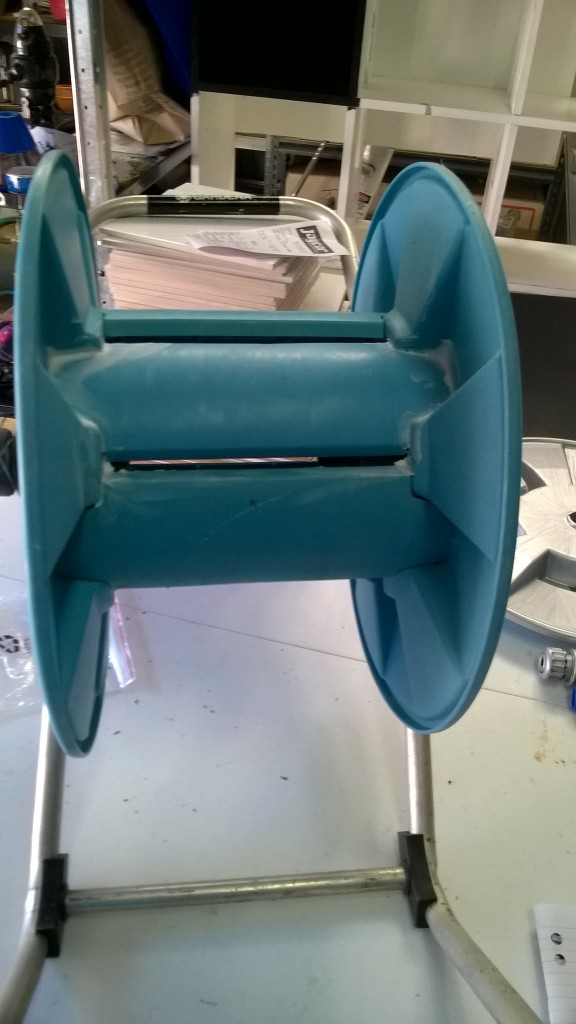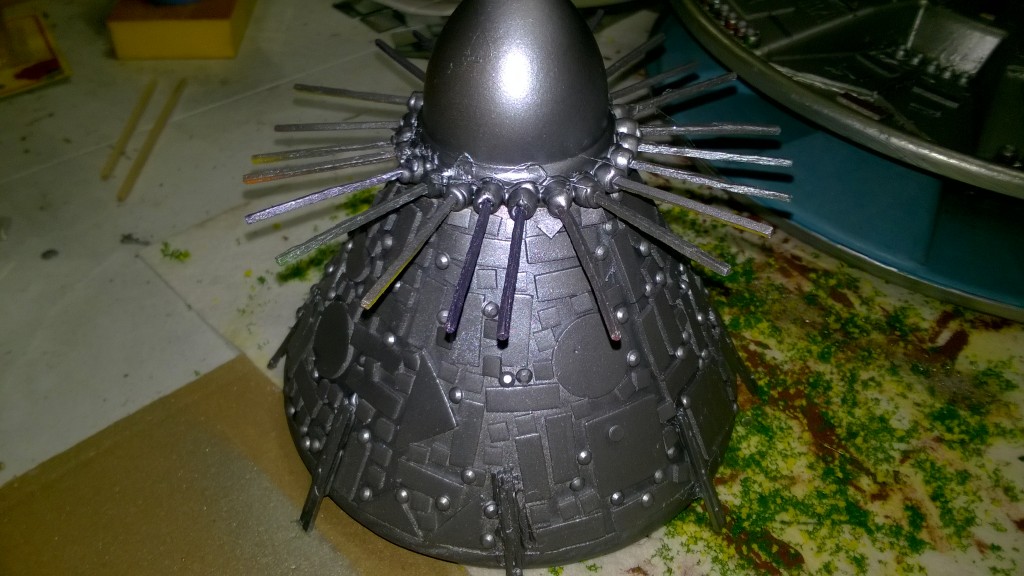Oral Presentation Assessment: Building the GS Model
Stu dents undertaking the GS Project are asked to build a model of a generation spaceship. This GS should not be too similar to other, visual versions of ships seen in film or in the design websites for actually building a GS.
dents undertaking the GS Project are asked to build a model of a generation spaceship. This GS should not be too similar to other, visual versions of ships seen in film or in the design websites for actually building a GS.
The GS should be made from discarded, recycled bits and pieces, then modified by their own hands, using simple glue, paint and decal as they see fit. The GS should have a power unit, a habitat section, a pilot section and should also have the ability to house smaller craft that could reach an habitable planet, when the GS flight is over, if ever. In Canberra, models could be built from very inexpensive bits and pieces found at the Green Shed, an ACT recycling initiative where old hose reels, bits of plastic, steel and wood can be purchased for a pittance with profits going to the unemployed or for the environment. The rather worrying teacher’s example found on this site is an example of the use of found objects, as seen here.

JPG image of original state of turning ringworld detail
The GS model should show a place for the living, sentient human pilots and passengers to work and live, as this is not a ship for colonists in suspended animation or with nanomachines to build people after arrival – the ship must house the travellers for generations!
One strong rule of the GS is that it should have an engine as they are understood now. This excludes a Faster-Than-Light (FTL) engine and a simple bending of space to move through some mystical or physical portal. In other words, it should obey the rules of 21st Century physics.
Students can work individually or in small groups (a maximum of four as practised in Canberra, but at the complete discretion of the teacher) to build the GS and then present it to the class and any interested others, such as stakeholders from other classes, studies or even space scientists who might see the presentation online, or in the classroom.

Early state of lampshade painted with crenulations and matches
In earlier examples students could also work to build the GS with such software as Google SketchUp, Autodesk or through direct graphics programming, rather than build an actual model. However, teachers should consider the considerable enjoyment gained by students actually creating a model as part of a STEAM project then publishing it as a presentation and for the school intranet or other system.
- The actual task for this assessment, based in a MYP Oral Assessment for the Australian Curriculum: English Year 9 can be found here.
- There are examples of GS craft on the GS Models page, found here.
Further


